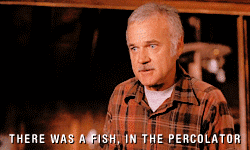keahunter
Active Member
- Joined
- Sep 3, 2013
- Messages
- 35
- Reaction score
- 1
I'm really new at this stuff. I brewed my first batch, a porter, and I am extremely happy with the results. I want to plan my next batch and had a question. I was going to purchase a chocolate stout kit and thought that adding a bit of coffee would be a nice flavor as well. Thought about steeping some coffee with the specialty grains. what is your opinion on this? (either the flavor, method, etc?)




